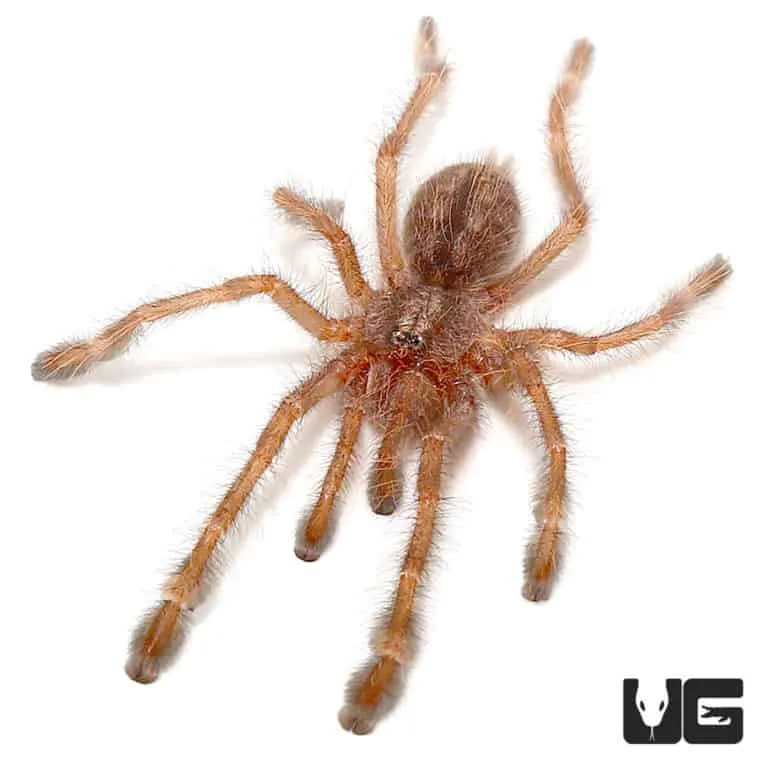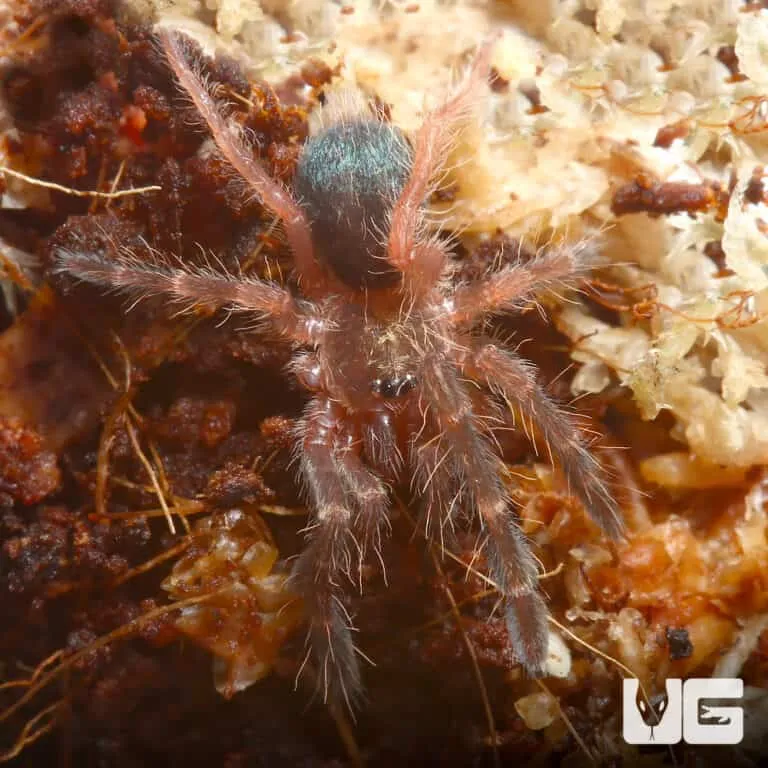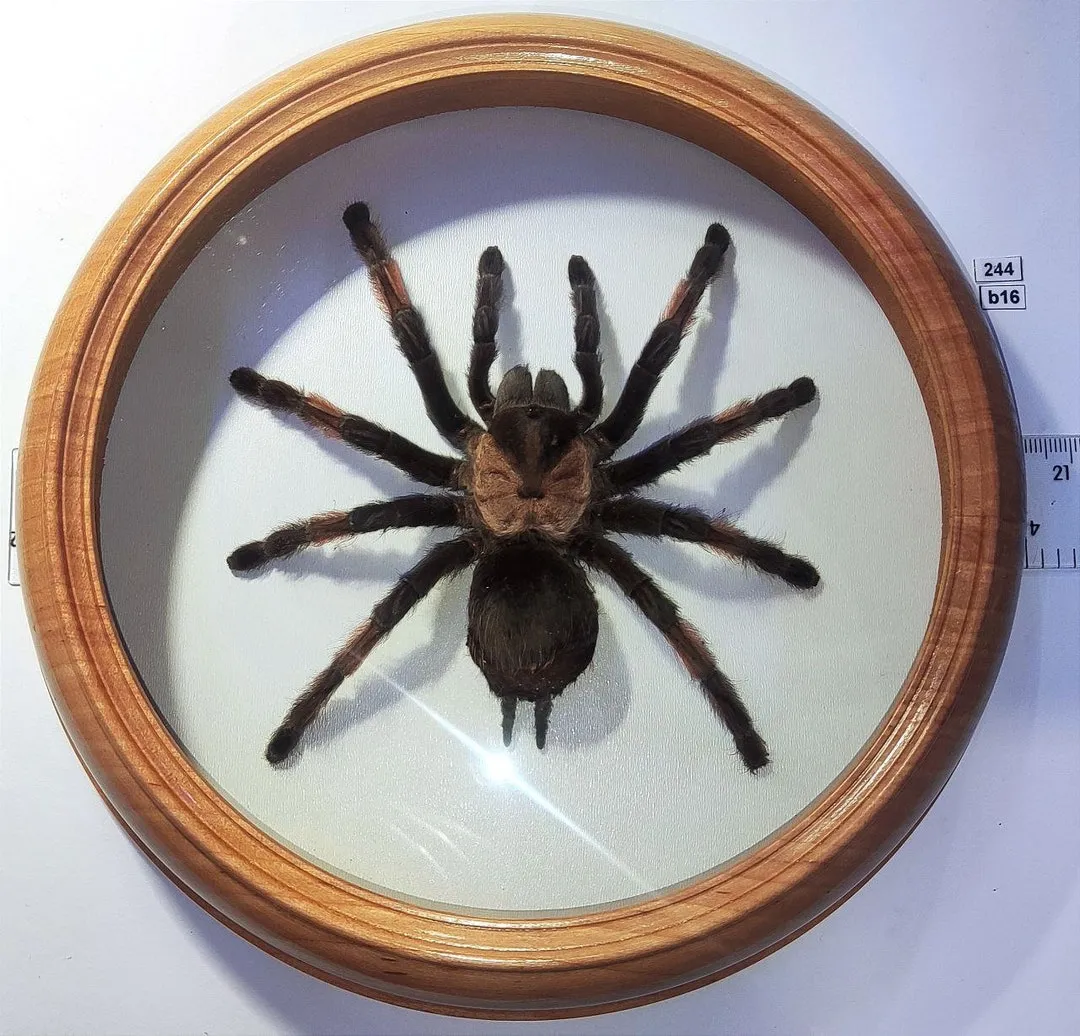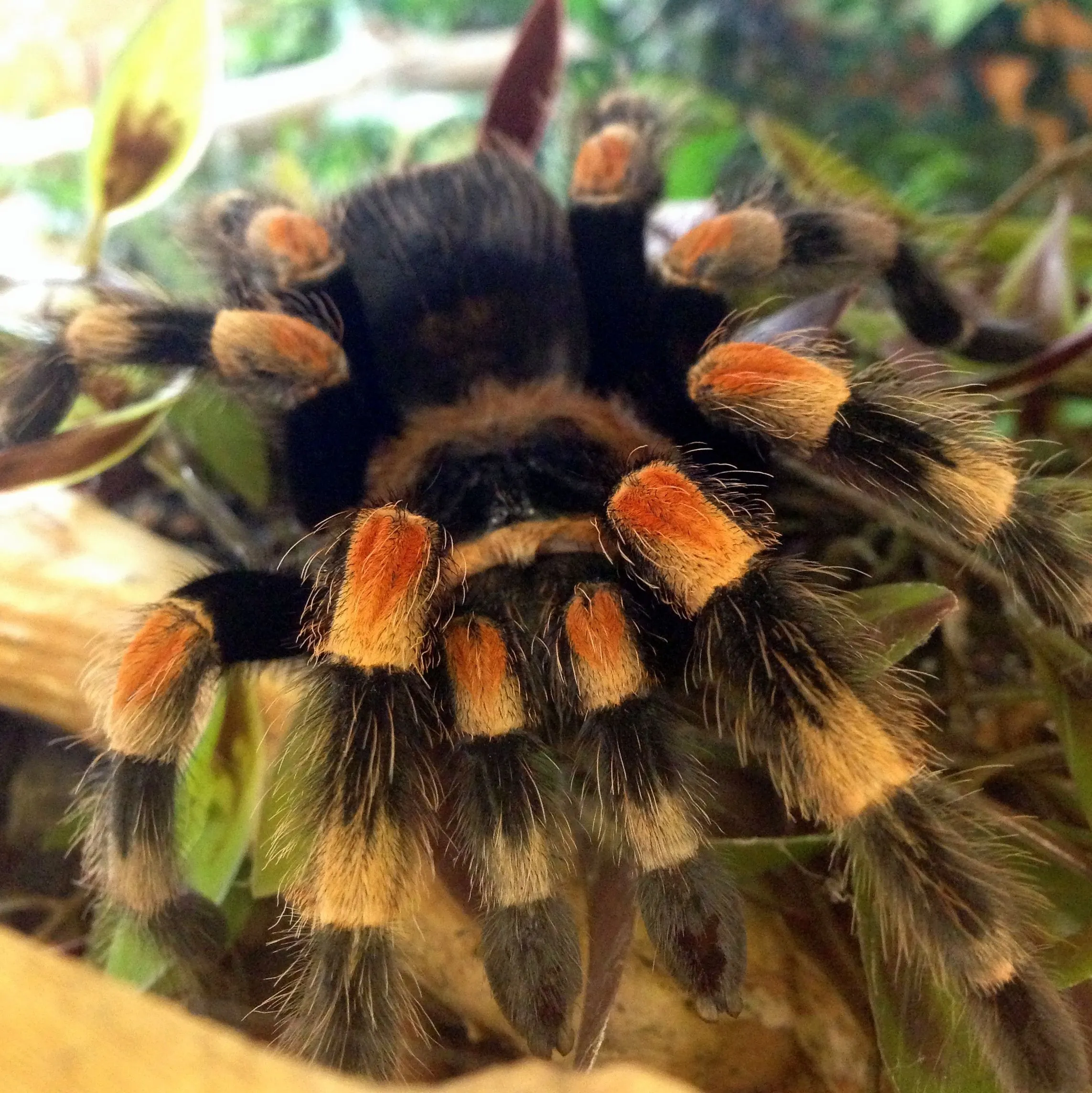Essential Red Footed Tarantula Care
The red footed tarantula, a captivating and popular pet, requires specific care to thrive. These spiders, native to the rainforests of South America, are known for their striking appearance and relatively docile temperament. However, responsible ownership demands understanding their needs, which includes proper housing, feeding, and handling. Providing the right environment is crucial for their health and longevity. This guide covers the essential aspects of red footed tarantula care, ensuring your pet lives a long, healthy, and fulfilling life. Ignoring these needs can lead to stress, illness, and even premature death of your tarantula, so pay close attention to each section and implement the recommendations carefully.
Choosing the Right Enclosure
The enclosure is the cornerstone of your red footed tarantula’s well-being. It provides shelter, security, and the environmental conditions they need to flourish. Selecting the right enclosure involves considering size, material, and ventilation, all of which play vital roles in creating a suitable habitat. A well-chosen enclosure not only meets the tarantula’s physical needs but also helps you observe and interact with your pet in a safe and responsible manner. It’s an investment in their health and your enjoyment of their fascinating behavior, so take the time to choose wisely. Your choice dictates how well you can provide for your tarantula and how enjoyable the experience will be for you both.
Enclosure Size and Type

The size of the enclosure depends on the size of your red footed tarantula. A general rule is to provide an enclosure that is at least three times the spider’s leg span in width and length, and tall enough to allow for substrate and any decorative items. For a juvenile, a small, secure container will suffice, but as it grows, it will need a larger home. Acrylic or glass terrariums with secure lids are excellent choices, as they offer good visibility and are easy to clean. Ensure the lid is escape-proof, as red footed tarantulas are skilled climbers. Ventilation is also crucial; the enclosure needs sufficient airflow to prevent mold and maintain humidity levels. The right size and type of enclosure is critical for your tarantula’s comfort and safety.
Substrate Selection
The substrate, the material at the bottom of the enclosure, serves multiple purposes including retaining humidity, providing a burrowing medium, and creating a naturalistic environment. For red footed tarantulas, a substrate that holds moisture well is ideal. A mix of peat moss, coconut fiber, and a small amount of sphagnum moss is a good starting point. Avoid substrates that are dusty or can be easily ingested, such as sand. The substrate should be deep enough for the tarantula to burrow, if it chooses to. Regular cleaning of the substrate is essential to remove waste and uneaten food, preventing the build-up of harmful bacteria and maintaining a healthy environment. Make sure the substrate does not contain any harmful chemicals or pesticides.
Humidity and Temperature Control
Red footed tarantulas thrive in specific humidity and temperature ranges, mimicking their native rainforest habitat. These factors are crucial for their health, molting process, and overall well-being. Monitoring and maintaining these environmental conditions requires diligence and the right equipment. Failure to provide the appropriate conditions can lead to health problems. Investing in tools to measure and control humidity and temperature is, therefore, paramount for successful tarantula care. The right conditions will also make it easier for your tarantula to shed and to stay healthy.
Maintaining Optimal Humidity

Red footed tarantulas require a humidity level between 75% and 85%. You can achieve this by misting the enclosure regularly, typically every other day, depending on the ventilation and the substrate. Use a spray bottle with dechlorinated water to mist the enclosure, avoiding direct spraying of the tarantula. A hygrometer, a device that measures humidity, is essential for monitoring the humidity levels. Place the hygrometer inside the enclosure to ensure accurate readings. If the humidity drops below the required range, increase the misting frequency or add more moisture-retaining substrate. Excessive humidity can lead to mold growth, so maintaining a balance is key. Regularly check the humidity levels to ensure your tarantula is comfortable.
Temperature Regulation
The ideal temperature range for red footed tarantulas is between 75°F and 80°F (24°C to 27°C). In most homes, this temperature range is easily achievable. Use a thermometer to monitor the temperature inside the enclosure. Avoid placing the enclosure near direct sunlight or heat sources, as this can cause extreme temperature fluctuations. If the room temperature is consistently below the ideal range, you may need to use a heat mat placed on the side of the enclosure (never underneath, as this can overheat the substrate and harm the tarantula). Always monitor the temperature carefully to ensure the heat source does not overheat the enclosure. This is about creating the perfect environment for your tarantula to thrive.
Feeding Your Red Footed Tarantula
Feeding is a fundamental aspect of red footed tarantula care. Providing a balanced diet of the right insects ensures your tarantula receives the necessary nutrients for growth and vitality. Understanding what to feed, how often to feed, and how to ensure proper hydration are crucial for their health. The type and frequency of feeding can also influence your tarantula’s behavior and activity levels. The right feeding schedule will promote your tarantula’s well-being, ensuring they remain healthy and active. It’s a critical step in providing for your pet’s needs and contributing to their overall happiness.
Appropriate Food Choices

Red footed tarantulas are primarily insectivores, meaning they feed on insects. Suitable food choices include crickets, roaches (such as dubia roaches), mealworms, and occasionally, small spiders or other insects. The size of the food should be appropriate for the size of the tarantula, generally no larger than the tarantula’s body. Always ensure the insects are gut-loaded (fed nutritious food for 24-48 hours before feeding them to the tarantula) to provide extra nutrients. Avoid feeding insects that have been exposed to pesticides. Variety is beneficial, so rotate between different types of insects to provide a balanced diet. The quality of food greatly affects the health of your pet, so choosing the right insects is paramount to providing the best care.
Feeding Frequency
The feeding frequency depends on the tarantula’s age and size. Juvenile red footed tarantulas typically need to be fed two to three times a week, while adults can be fed once a week or even less often. Observe your tarantula’s feeding habits; if it readily eats the food, you may increase the frequency slightly. If the tarantula refuses food, it may be in pre-molt or not hungry. Remove any uneaten food within 24 hours to prevent the build-up of mold or mites. Adjust the feeding schedule based on the individual tarantula’s needs. Monitor the size of the abdomen; a healthy tarantula will have a slightly rounded abdomen, indicating it is well-fed. Always check the tarantula’s behavior and adjust the schedule accordingly.
Water and Hydration
Water is essential for all living creatures, and red footed tarantulas are no exception. They need a constant supply of fresh water to stay hydrated and healthy. Proper hydration is vital for their molting process, digestion, and overall health. Failing to provide adequate water can lead to dehydration and serious health issues. Offering clean water is therefore a non-negotiable aspect of tarantula care. The right approach will keep your tarantula healthy and prevent a host of problems from arising. Providing hydration in the right form is also essential.
Providing Fresh Water

Always provide fresh water in a shallow dish. The dish should be small enough to prevent the tarantula from falling in and drowning. Use a water dish made of non-toxic materials. Change the water regularly, at least once a week, to prevent bacterial growth. Alternatively, you can provide water by misting the enclosure, allowing the tarantula to drink water droplets. However, a water dish is the more reliable method. Consider using a small sponge in the water dish, which also provides a surface for the tarantula to drink from. Ensure the dish is always clean and free of debris. Providing fresh, clean water is a fundamental requirement in the care of your red footed tarantula.
Preventing Dehydration
Dehydration can be a serious threat to red footed tarantulas, especially in dry environments. Signs of dehydration include a shrunken abdomen and lethargy. To prevent dehydration, ensure the humidity levels are maintained correctly and provide a constant supply of fresh water. Regularly mist the enclosure, especially during the dry season. If you suspect your tarantula is dehydrated, gently mist it directly with water, but avoid doing so excessively. Monitor your tarantula’s behavior and appearance for signs of dehydration. By providing the appropriate level of humidity and water, you are creating a healthy environment for your pet. Always pay close attention to the state of your tarantula and act quickly if something seems off.
Handling and Safety
Handling a red footed tarantula should be approached with caution and respect. While generally docile, tarantulas can bite if they feel threatened, and their venom can cause localized pain and discomfort. Additionally, a fall from a height can be fatal for a tarantula. Understanding how to handle your pet safely minimizes the risk of injury to both you and the tarantula. It’s essential to learn safe handling practices and be aware of potential risks. Proper precautions and awareness are key to responsible tarantula ownership, allowing you to interact with your pet without causing harm. A good handling process also allows you to get closer to your pet.
Safe Handling Practices

If you choose to handle your red footed tarantula, do so with care. Always handle it close to the ground or over a soft surface, in case it falls. Avoid sudden movements, which could startle the tarantula. Gently coax the tarantula onto your hand; never try to grab it. Wash your hands thoroughly before and after handling the tarantula. Avoid handling the tarantula if it is in pre-molt, as its fangs are more fragile during this period. If the tarantula shows signs of stress, such as raising its front legs in a defensive posture, stop handling it immediately and return it to its enclosure. Handling should be a controlled and calm process. Being mindful of the spider’s stress level is very important.
Recognizing Stress Signs
It is essential to recognize signs of stress in your red footed tarantula. These signs include raising its front legs in a defensive posture, flicking hairs from its abdomen (a defensive mechanism), running erratically, or refusing food. If your tarantula shows any of these signs, it is best to leave it alone and allow it to retreat to its enclosure. Prolonged stress can lead to health problems. Providing a safe and secure environment minimizes stress. Regular observation of your tarantula’s behavior will help you identify any potential issues early on. Always prioritize the well-being of your pet. Your spider’s body language will also help you understand its status.
In conclusion, caring for a red footed tarantula requires understanding their specific needs. By providing the right enclosure, maintaining optimal humidity and temperature, feeding them appropriately, and handling them with care, you can ensure your pet lives a long, healthy, and fulfilling life. Remember that responsible tarantula ownership is about creating the best possible environment and respecting your pet’s needs. With proper care, you can enjoy the unique pleasure of observing and interacting with these amazing creatures. Providing for your tarantula’s needs is a gratifying and rewarding experience. Enjoy your journey with this unique pet!
